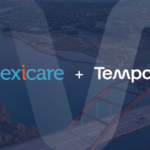
An unfortunate side-effect of our privatized healthcare system is its dependence on medical collections to maintain revenues. All businesses struggle to get paid at times, but the healthcare industry faces disproportionate challenges, accounting for 58% of all third-party debt collection.
Complexities in the healthcare billing system cause these payment gaps, over-burdening healthcare providers while stressing vulnerable patients. In fact, the American Hospital Association reports that since 2000, hospitals of all types have provided about $745 billion in uncompensated patient care. Providers have reluctantly become banks overly focused on unpaid collections at the expense of quality care, and patients struggle to make payments due to confusion and cost.
It is not just the uninsured who can’t pay. Patients who are able to pay often get lost in the confusing mess of the collections system as well. According to a study by Crowe, almost 58% of patient bad debt in 2021 came from self-pay accounts after insurance, compared with about 11% in 2018.
Providers, in turn, are forced to chase down payments, often sending letters, texts, calls, or even demanding money upfront before treatment. This arm twisting creates unwanted tension, alienating the consumer and driving them away from seeking care. The situation will only get worse, with bad debt expected to rise as emergency department volumes recover from the pandemic and staffing situations worsen.
Medical debt has a cascading effect as well. Unpaid debt reported to consumer credit agencies lowers their credit scores, which can reduce their access to credit, housing, and employment.
Some providers offer financial assistance programs to help reduce the financial burden for patients in need. A number of states also provide discount care to low-income individuals under the Affordable Care Act. But these programs still keep providers in the banking business of sorts.
The most effective way to close this payment gap is to get healthcare providers out of debt collection altogether. Fintech companies have introduced a new kind of financial model that bridges consumer payment gaps by ensuring providers get paid upfront while easing the billing experience for patients.
These new models work by guaranteeing prompt full payments to healthcare providers in exchange for giving consumers more affordable repayment plans.
They shift the financial relationship away from providers (and debt collectors) to specialized service providers who remove the system’s inefficiencies and streamline the payment process for all. They pay the patient invoice to the provider upfront and then assume the extended payment relationship with the patient. Some platforms provide credit for out-of-pocket costs at low to no interest and construct a payment schedule that fits the person’s needs, regardless of their credit history. By covering patients’ medical bills up to their full out-of-pocket maximum, patients can be redirected to a flexible payment plan that fits their budget, simple, and stress-free.
This approach can also benefit consumers that have insurance but still struggle with high deductibles and co-pays. For example, consumers can be offered manageable repayment plans for all allowed in-network charges up to their maximum out-of-pocket amount. Or they can receive credit for out-of-pocket costs at low to no interest and construct a payment schedule that fits their needs. Most importantly, they guarantee payment to providers and credit to all employees, regardless of their credit record.
In turn, consumers are no longer chased by collections or demanded to make pre-payment for care when finances are tight. Service providers pay the patient invoice to the healthcare provider as soon as a claim is adjudicated and take on the extended payment relationship with the patient.
These models also benefit consumers by creating a more patient-centric experience across the entire billing lifecycle. Conventional medical billing systems generate disaggregated, repetitive information that is not very useful for understanding their payment situation. Explanation of Benefits (EOBs) have become increasingly complex, costly and confusing for people who just want to know how much they owe for the care they are provided and find ways to finance the costs.
Worse yet, this confusion has negative consequences for vulnerable patients’ own care, with many putting off scheduling an appointment with their caregivers or forgoing a prescription filled due to the uncertainty. As patients delay making necessary and preventative appointments, and not taking their medications, it will inevitably lead to more expensive, emergent needs for care.
The new payment models eliminate the confusion surrounding billing. Instead of experiencing a blizzard of statements and notices, consumers get a single, simple consolidated statement summarizing the totality of their care, regardless of where they received the care. The result is that consumers are better informed, more in control of their medical expenses and, most importantly, more re-engaged to seek the care they need. Providers, meanwhile, are freed from the debt collection cycle, enabling them to focus more resources on delivering quality patient care.
SOURCE: https://www.healthcarebusinesstoday.com/closing-the-payment-gap-getting-providers-out-of-the-collections-business/


